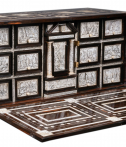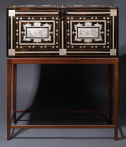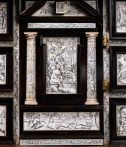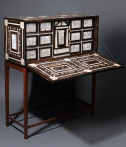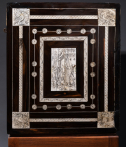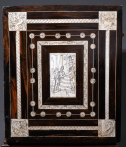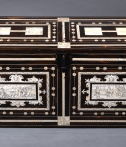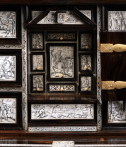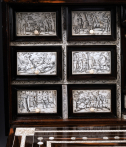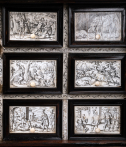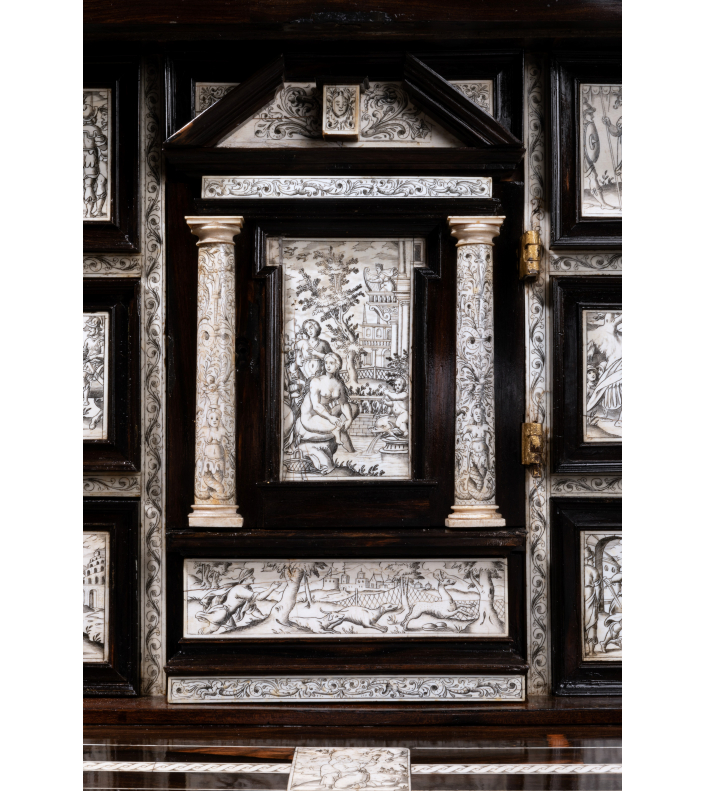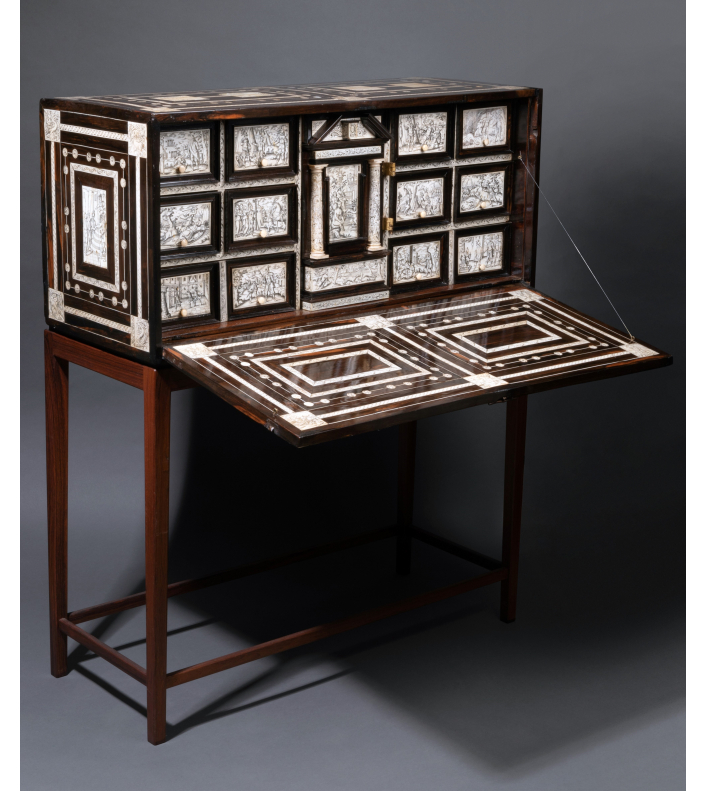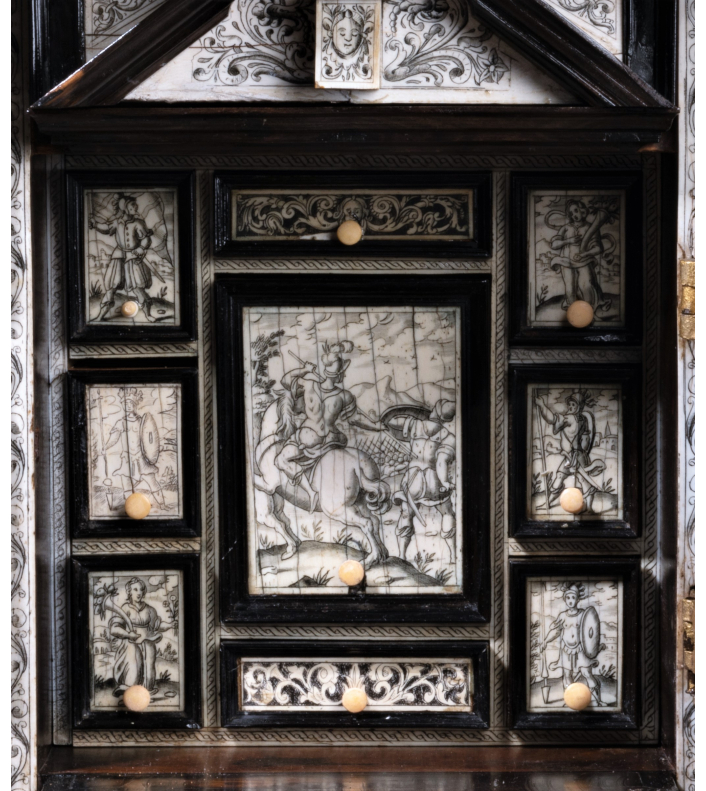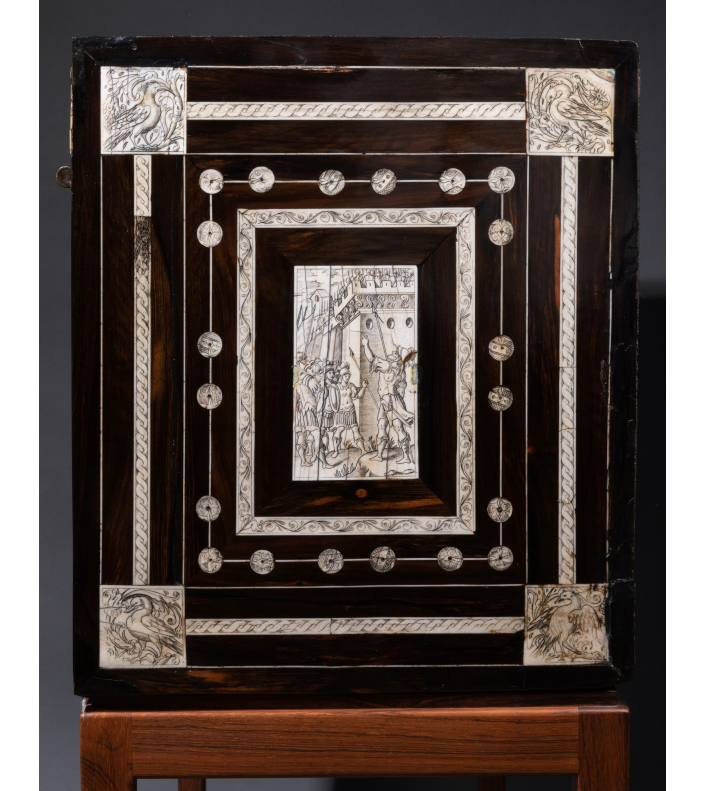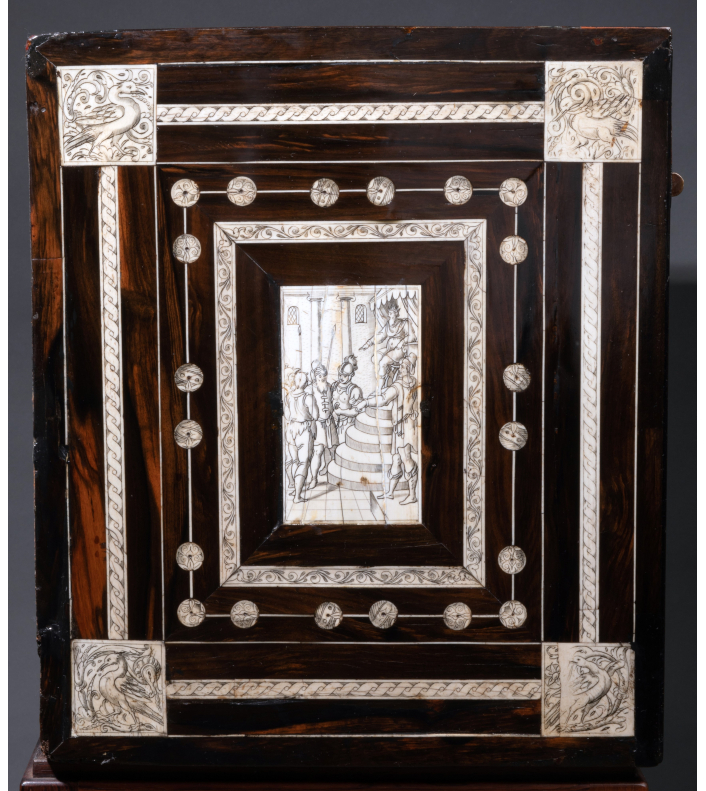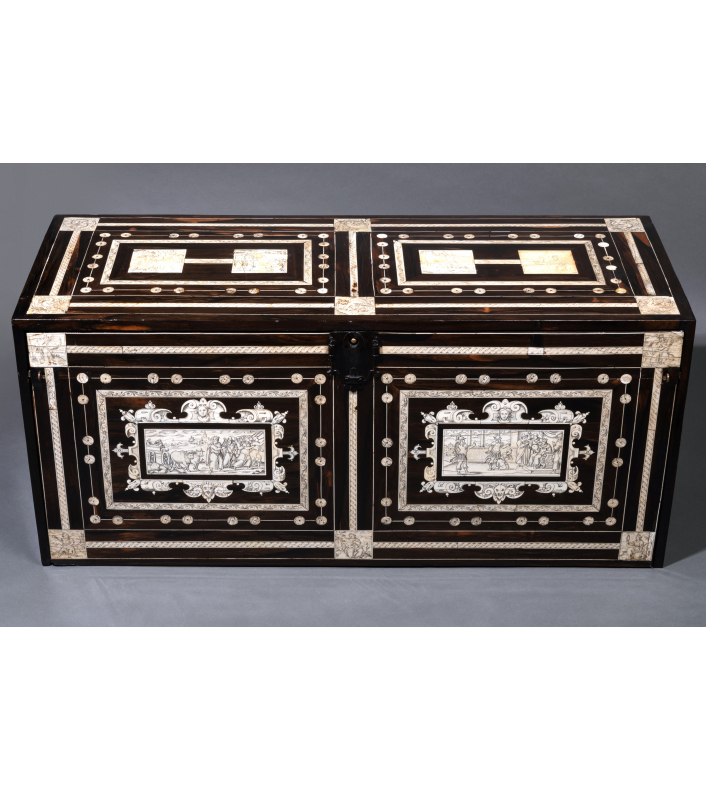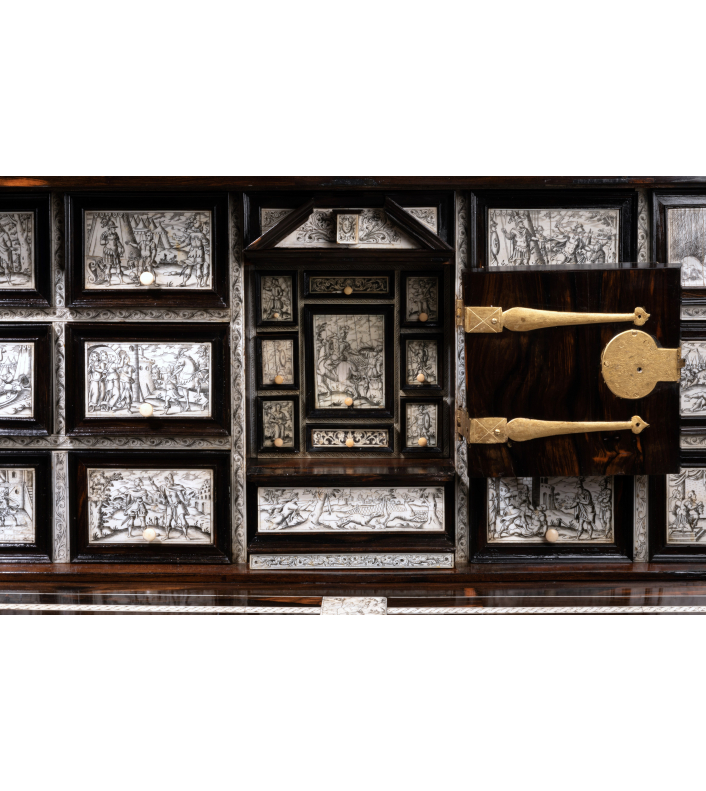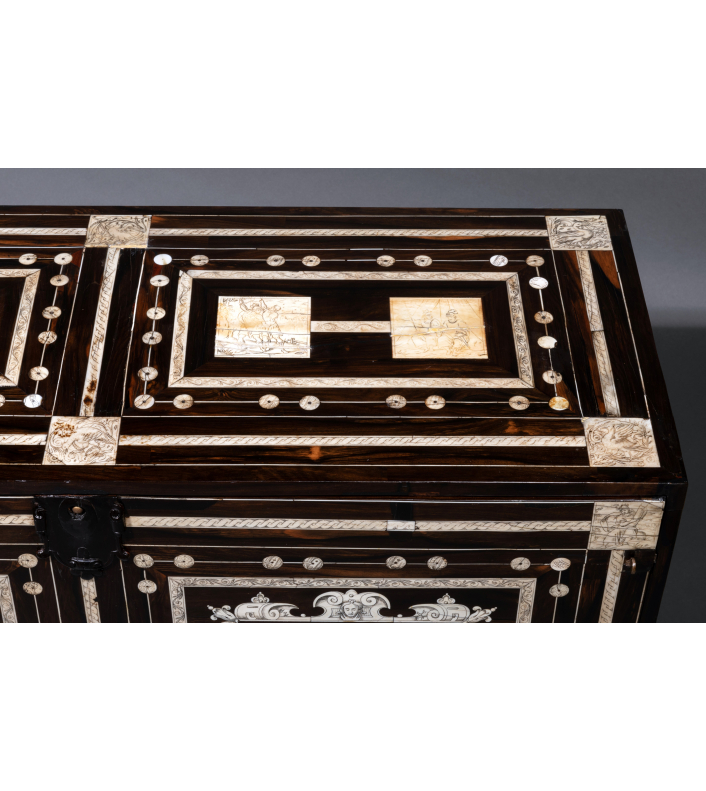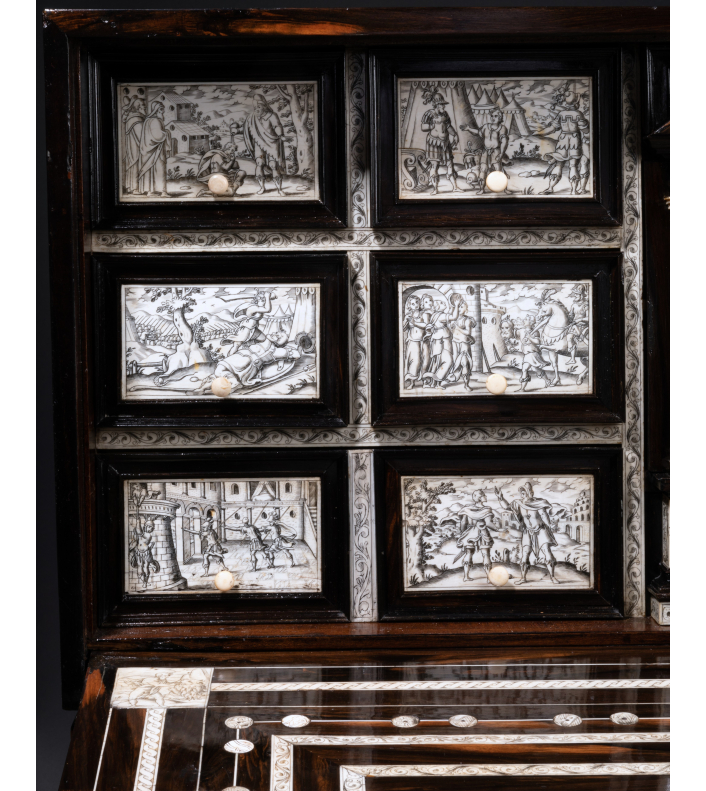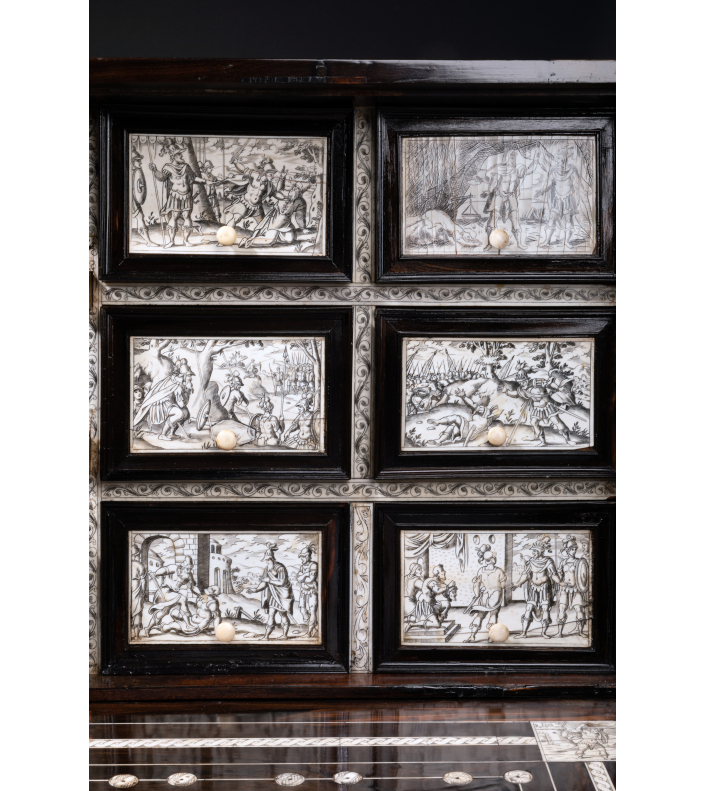Exceptional ebony cabinet richly decorated with ivory plaques engraved and enhanced with ink telling the story of David, biblical king.
A rare piece produced in the Neapolitan workshop of the cabinetmaker Iacopo Fiamengo at the beginning of the 17th century and probably by the famous ivory engraver Giovanni Battista de Curtis.
Rectangular in shape, our cabinet opens with a fallfront revealing twelve drawers and a central door.
Each drawer has, in a frame of ebony moldings, an engraved ivory plaque illustrating one of the episodes of David's life.
The central door receives the key subject "Bathsheba in the bath", behind this door hides a removable chest composed of 8 small drawers with fronts in engraved ivory.
The exterior of the cabinet benefits from a complex decoration made up of medallions, cartouches, pastilles, frames, nets and ivory plaques on an ebony veneer background.
The top and the sides receive a similar decoration which makes the cabinet homogeneous from an aesthetic point of view. Thus closed, the cabinet displays a sumptuous and open decor, it impresses with the quality of its plates and its unparalleled ornamentation.
The subjects of the engraved plates come from Renaissance engravings. The choice of David's story, a royal story, suggests that the sponsor was likely inspired by David's exploits and his unusual destiny as a shepherd's son who became king of Israel.
The exterior facade thus presents in cartouches on the left
“King David carrying the Ark of the Covenant to Jerusalem”
on the right
“Saul receives David at court”.
In the frames four rectangular plaques endowed with cardinal virtues: Prudence, Temperance, Strength and Justice, and in the lower part Charity.
The right side: "Akimelek is taken before Saul"
The left side: "Saul before the city of Amalek"
The central door: "David sees Bathsheba bathing from the balcony of her palace"
The drawers on the left side:
- - David is anointed by the prophet Samuel
- - David asks Saul for permission to fight Goliath
- - David kills the Goliath
- - The triumph of David: the women welcome David before the walls of Jerusalem
- - Mikal, David's wife and Saul's daughter, helps David escape from Saul's palace
- - David meets Samuel after escaping from Saul
Right side drawers:
- - Saul orders Akhimelek killed for helping David
- - The ghost of Samuel is evoked by the witch of Endor
- - David hidden in a cave cuts off Saul's clothes while he relieves himself
- - Saul surrounded by the Philistines throws himself on his sword
- - Samuel kills Agag, after Saul spares him
- - The Philistines take away the head of Saul
Attributed to the workshop of the cabinetmaker Iacopo Fiamengo, active in Naples between 1592 and 1602 and to the ivory engraver Giovanni Battista de Curtis
Excellent original condition
Original locks
Dimensions: h. 42 cm, w. 92 cm, p. 35cm
Height with base: h. 112cm
Modern base in exotic solid wood.
Related items in international museums:
Museum für Kunst und Gewerbe, Hamburg, signed De Curtis, Victoria and Albert Museum, London, Philadelphia Museum of Art, Los Angeles, County Museum of Art, Musée Benoît-De-Puydt de Bailleul, Museum of Saint Martin of Naples.
Our cabinet, an exquisite work of Renaissance art, reflects the enthusiasm for precious and refined objects.
The narrative richness due to the talent of engraver on ivory, associated with rare and precious materials makes it possible to have an object that is both didactic and aesthetic. Potential sponsors such as the European princely courts or the Spanish aristocracy sought to impress not only with their access to the riches of the world, but also with their extreme level of scholarship. In the era of humanism, every prince or noble must be a philosopher.
After annexing Portugal in 1580, Spain gained a monopoly on the trade and import of ivory and ebony, the most luxurious materials used in the creation of furniture and objects. In the 1590s, ebony-veneered cabinets adorned with engraved ivory plaques experienced considerable popularity in Spain. The best examples were made in Naples, one of the most important Spanish territories, which benefits from rare products arriving from Asia and Africa. These expensive materials are transformed on site and renowned craftsmen and artists settle in order to make their workshops prosper.
Iacopo Fiamengo signed collaboration contracts with several ivory engravers and hired Giovanni Battista de Curtis, among others, to work on two cabinets with scenes from the Old Testament and metamorphoses by Ovid. The signature of De Curtis appears on the cabinet at the Museum of Decorative Arts in Hamburg, the only piece of furniture with such an attested origin.
The cabinet originated in Spain, where it is known as the escritorio; in Naples, cabinetmakers like Iacopo Fiamengo were called scrittorista. Mainly made to accommodate collections of curiosities and precious objects, the cabinets also had the role of demonstrating the wealth of their owners and therefore the decor had to be as luxurious as possible, because intended for the great nobility or the rich merchants or shipowners.


